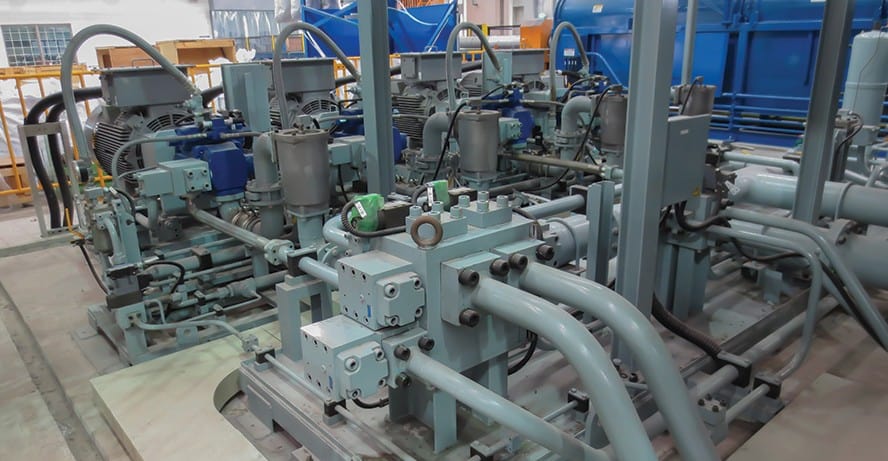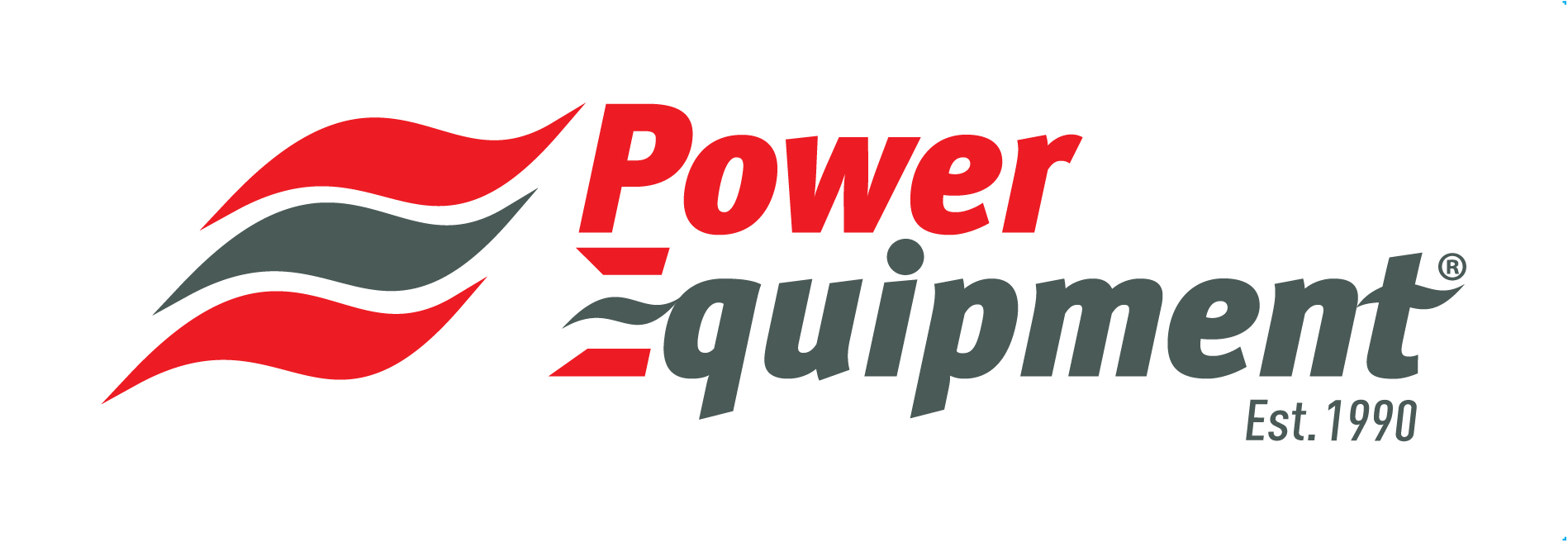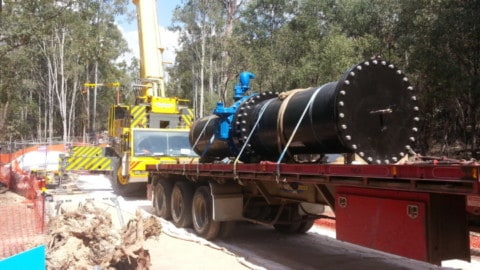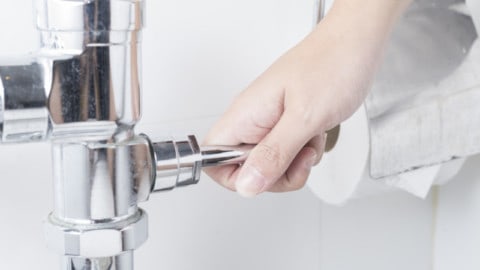In many cases, a variable speed drive (VSD) can provide real benefits to a pumping system in regards to energy efficiency, reliability and system control. However, to get the greatest benefit, the right VSD must be matched to the system and application. Here, we look at some of the important considerations to factor into your choice of VSD.

A variable speed drive can provide real benefits to a pumping system in regards to energy efficiency, reliability and system
control.
The potential benefits of VSDs
The energy consumed by pumps makes up a significant proportion of a pumping system’s lifecycle costs. In applications with variable flow or pressure requirements where a single pump is used, that pump will be sized for the maximum duty requirements.
Therefore, whenever it is operating at demands other than the maximum, it will be using more energy than is actually required and therefore will be operating inefficiently.
In such instances, employing a control method to reduce the power used by the pump at times of reduced demand, such as a variable speed drive, can result in significant energy and cost savings.
Effectively, the VSD changes the pump curve to match changes to the system curve and ensure that the pump operates within its ideal range.
Additional benefits to a system realised through VSDs may include improved control over a system, meaning that variations in process conditions can be corrected rapidly, preventing flow or pressure surges.
Preventing a pump from operating at speeds above those necessary for the application and eliminating the need to throttle can also reduce unnecessary wear on pump components like bearings and seals, increasing their operating life and improving system reliability.
When designing new pumping systems, installing a VSD can often eliminate the need for bypass lines and control valves, which helps offset the cost of the VSD.
The most commonly used VSDs in pumping applications are variable frequency drives (VFD), which control an electric pump motor by varying the frequency and voltage supplied. This type of VSD is particularly popular due to affordability and cost-effectiveness, and is particularly useful in systems with high friction losses.
However, other VSD technologies include hydrostatic drives, fluid couplings, DC drives, continuously variable transmissions, eddy current drives and slip ring motors.
Is a VSD right for your system?
Before going into the details of VSD selection, you must first be sure that a VSD really is the most economic and effective solution for your pumping system.
While VSDs often provide considerable advantages for pumping systems with variable duty requirements, they are not invariably the most economical solution to oversized pumps.
In some cases where the duty requirements don’t vary, resizing the pump, changing the impeller diameter, or even replacing the pump with a correctly sized pump may result in greater lifetime cost savings at a lower initial cost than fitting a VSD.
Additionally, VSDs are not without their potential downsides if applied inappropriately and these must be taken into consideration. Most of these can be readily be avoided or resolved if taken into account when selecting equipment. It is important to consider:
- The VSDs own internal losses – if appropriately applied these should be insignificant compared to the energy savings generated.
- The type of motor in the system – when retrofitting a VSD to an existing system, it is important to ensure that the motor is VSD compatible and will not overheat at low speeds due to insufficient cooling. The VSD must also be correctly sized to the motor.
- Potential vibration due to resonance conditions – variable frequencies can increase the likelihood of encountering a resonance that causes vibration problems. This can usually be avoided by calculating hydraulic resonance and structural resonance and/or conducting analyses such as passing frequency analysis or modal testing.
- Rotor dynamics – varying speed can increase the likelihood of a rotating element reaching a lateral critical speed, which can cause vibration.
- Pulse width modulation switching – it is possible for the voltage waveforms of a VSD to cause electromagnetic interference that may affect other equipment. Filters and screened cables between the VSD and motor can combat this.
All in all, VSDs should not be used as a ‘magic fix’ for a poorly designed system and a proper cost-benefit analysis should always be conducted to ensure that investing in a VSD is justified.
Making a selection
In order to appropriately and effectively apply a VSD, the requirements of the pumping system in question must be well understood.
The key consideration when considering installing a VSD is the pumping application itself.
Hydraulic considerations
In order to reach the desired flow rate, the pressure in the pumping system must overcome the losses caused by static head (the elevation differential) and friction head (the losses caused by the friction between the liquid being pumped and the internal surfaces of the system).
The comparative values of static and friction head in a pumping system can impact the benefits achieved by a VSD.
VSDs are often an ideal control method in systems employing rotodynamic pumps where friction loss dominates (such as a closed loop system or a long pipeline).
This is because the ratio of flow versus speed will be very linear and there will be a significant reduction in energy use as a result of reduction in speed.
However, in systems with high levels of static head, VSD control can be more difficult because the reduction in flow is not necessarily proportional to speed and a small speed reduction can result in a much greater reduction in flow and efficiency.
In this kind of system, care must be taken to plot pump curves at various speeds against the system curve, and to calculate the percentage flow change against the speed change and plot it against flow to determine if the sensitivity to speed change is to high at low flow rates.
In systems employing positive displacement pumps, flow is proportional to speed, however pressure may not be. This can reduce the energy savings achieved when using a VSD to reduce speed.
This must be taken into account when evaluating the benefits of a VSD.
As always, the speed range over which the pump must operate should also be viewed with regards to its effects on other components of the system such as lubrication, cooling and valve operation, as well as the characteristics of the fluid being pumped, such as solids accumulation, liquid temperature and viscosity—especially if the speed range is particularly wide.
Life cycle cost analysis
The benefits of the VSD over time must be weighed against the initial costs of the unit. These may not be restricted to the cost of the unit itself, especially when retrofitting a VSD to an existing system.
Existing components (such as drivers, motors and couplings) will need to be evaluated for their suitability for working at variable frequencies. In some cases they may need to be replaced.
A life cycle cost analysis should be conducted for control alternatives, taking into account the initial cost of the unit, costs of installation and commissioning, operation costs, maintenance costs, repair costs, energy costs, decommissioning costs and any other relevant costs to be incurred over the system’s life cycle.
Control philosophies
The control philosophy by which the VSD will operate is also an important consideration. Often VSDs use programmable logic controllers to achieve a specific objective in response to signals from condition monitoring devices.
These may include:
- Maintaining a constant pressure – signals from a pressure sensor to maintain a set system delivery pressure regardless of system flow demand.
- Maintaining a constant level – a level sensor allows the VSD to maintain a set level in a tank or sump regardless of flow variance.
- Maintaining a constant flow – a flow meter sends signals to the VSD to alter pump speed to maintain a set system flow.
- Maintaining a set temperature – a temperature sensor is used to allow the VSD to maintain a set temperature by varying flow.
Additional considerations
Among the most important additional considerations when choosing a control method for a pumping system are the user interface, the environmental conditions the equipment will be exposed to and any relevant implications to safety.
The complexity and variety of inputs required and the different parameters of experience of operators may mean that a simpler or more expansive user interface will suit your application.
The environmental conditions in the area where the VSD will be housed are also important to consider and can have implications on how it is enclosed and the safety of operation and maintenance activities.
The VSD should comply with all relevant safety and environmental standards. Some VSDs also have additional safety functionalities that may be relevant to your application.
As with any equipment, the quality of the brand, warranty and after sale support are also important factors in purchasing decisions.
In a wide range of applications, a well-selected and appropriately deployed VSD can provide substantial benefits to your pumping system. However, VSDs are not a ‘one size fits all’ solution and it is important to do the research first to determine the specific requirements of your application.

















